I have a serial to parallel chip ( 74HC595-N ) which works well when I run the arduino script made for it. ( the current wiring work perfectly when I send data through the data pin )
But then I started to play around with other pins, leaving the 74HC595 circuit simply not initialized, I have weird behaviours happening. (I don't use the PIN in the 2nd script, I use other pins ).
I realized that when I play around with my 2nd circuit, for no apparent reason, the lights from the first circuit change state.
I though : uhhm, must be that weird concept of "floating voltage" I heard about... Not sure how to address that, but fair enough.
So I decide to fix the problem the lazy way and unplug the 3 cables ( latch, clock and data), great the light stopped flashing... Oh wait now ALL the lights are permanently ON. Since I'm not sending anything through the data cable, I'd like the LED to be OFF by default. I've tried to put some resistors in a attempt to create a pull up and/or pull down resistance, but it changed nothing ( possibly because I don't know what I'm doing as I don't fully understand what's going on and the details of how that chip work)... I'm just impressed I didn't blow anything up.
I know you'll say it's probably a useless question and bla bla bla, but I'm still learning and most of the "project" I'm doing right now are useless anyway, so I'd like to understand why all the light are on, and how to fix this problem. Kind of a side quest in my electronic adventure.
I drew a diagram from CircuitLab. ( Ps.: I know I kind of wired the 7segments display a weird way, I just figured out how to count the PIN order recently ... did I told you I was beginning ? )
